Tango lighting collection by Paul Matter features satellite-shaped shades
Indian design studio Paul Matter has released its debut collection of lighting, including lamps with rounded shades made from beaten brass (+ slideshow).
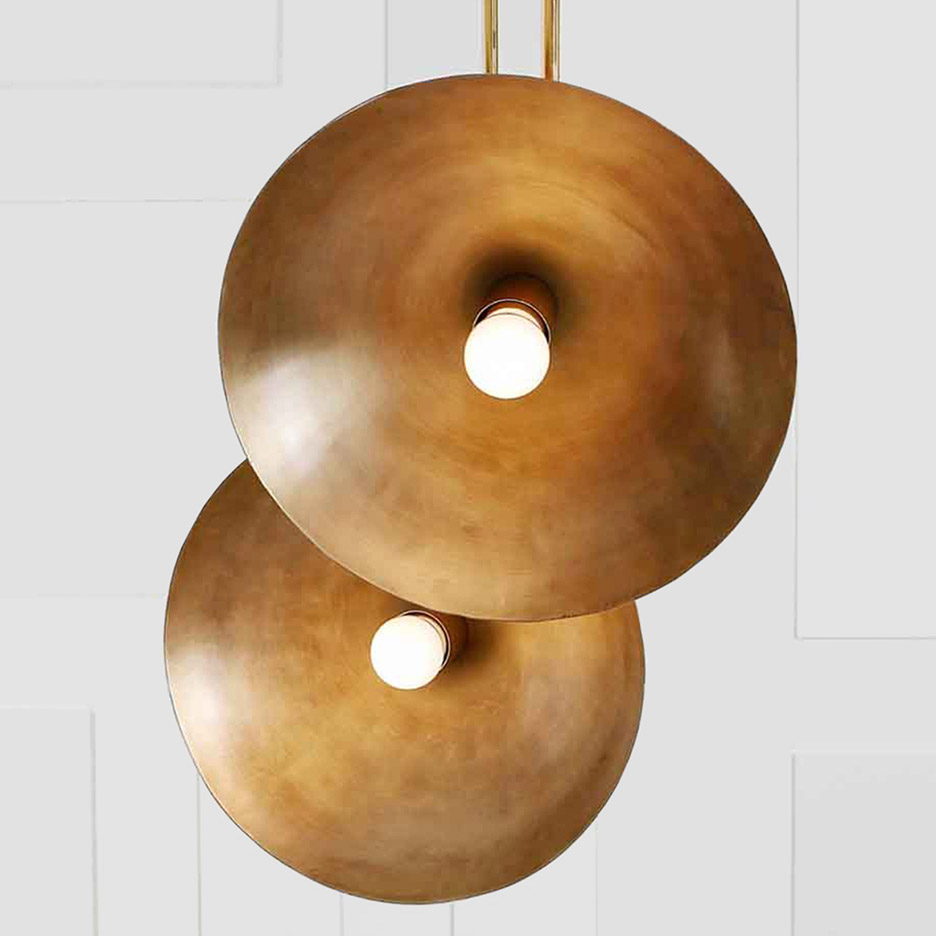
The Tango lighting hangs on a central stem, which terminates in a hinged elbow that can be used to adjust the lamp's direction. The collection includes both globe-shaped lights, as well as lamps with reflective shades that resemble satellite dishes.
"For the lamps we were looking at geometric forms, sculptures, floating in space," said Paul Matter studio, which is based in New Delhi and founded in 2015.
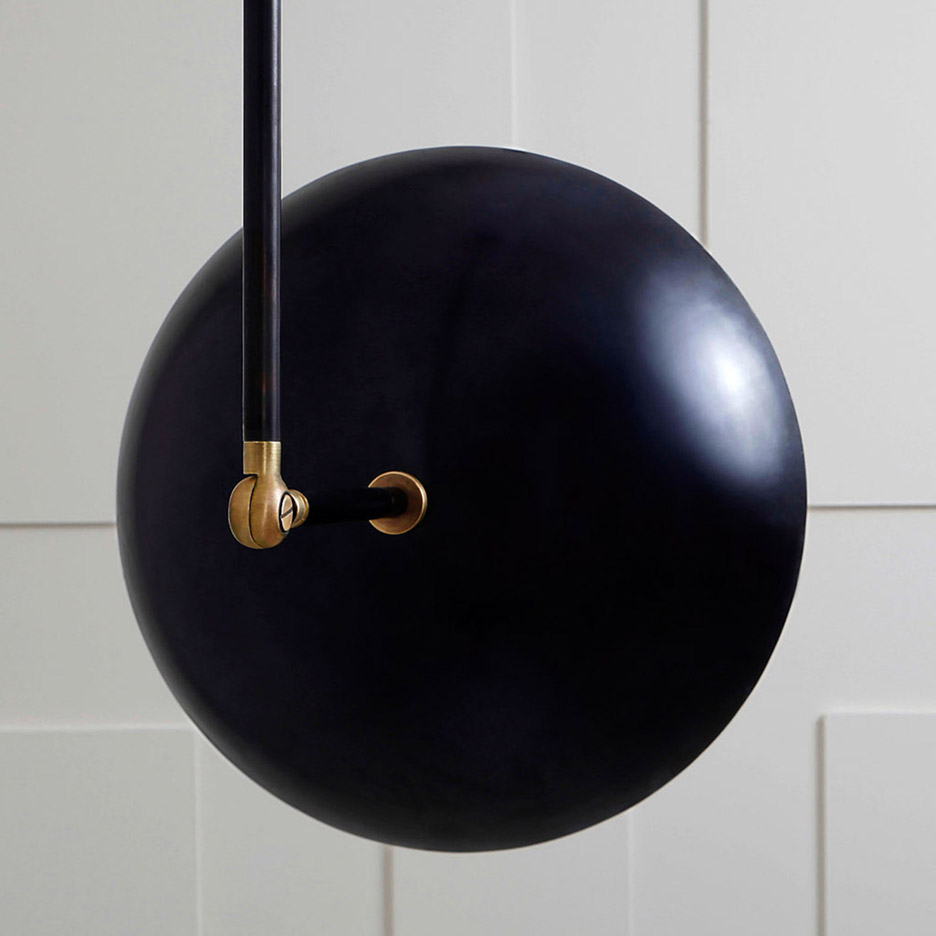
"That's what satellites are – a sculptural object when light isn't present, and its function begins with its transformation towards delivering light," it added.
The brass shades are hand beaten and patinated – a traditional finishing technique from India. According to the company, this means the lamps emit "soft pools of light".
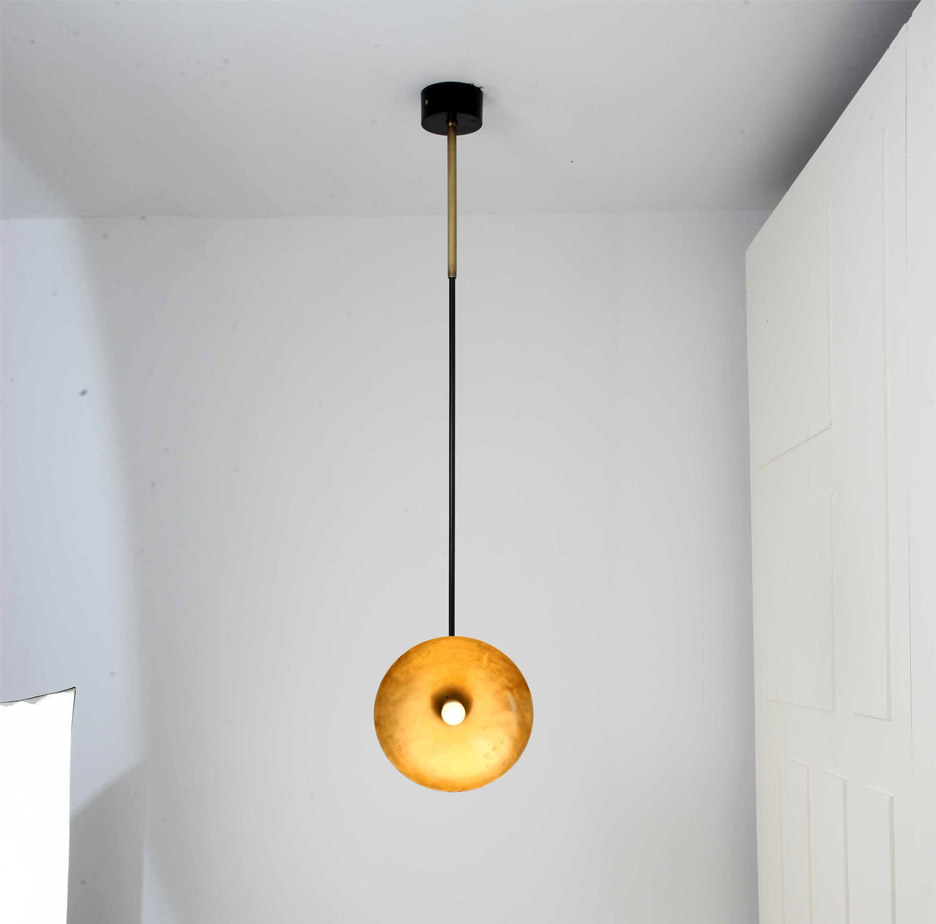
A set of candleholders accompany the collection, featuring a reflective silver base paired with a mirrored sphere – designed to reflect the light, and act as a counterweight and handle.
The range is named after the Latin ballroom dance, and draws its low-hanging elbow fixtures from the Tango's distinguising "marked rhythms, postures and abrupt pauses".
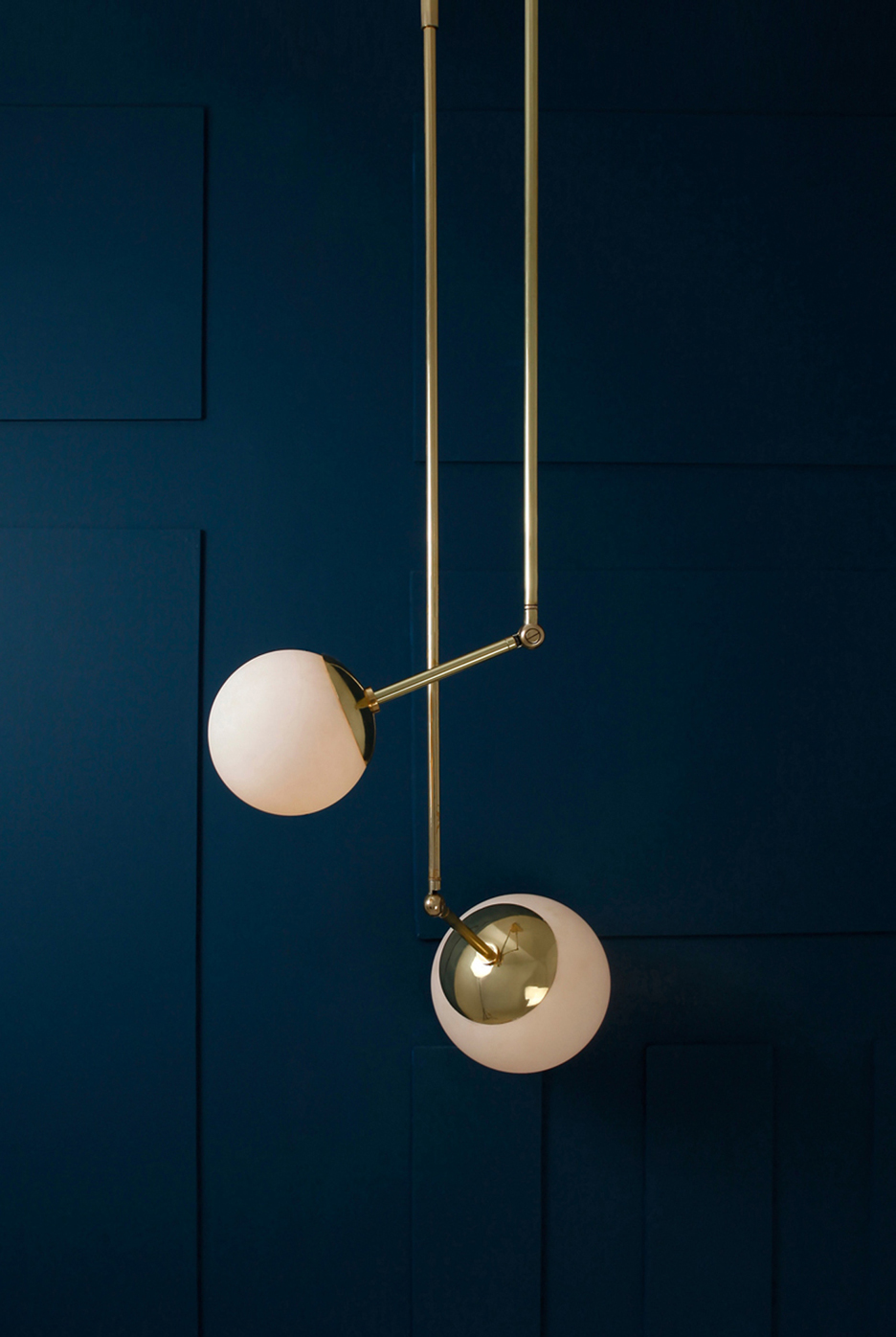
"We wanted to design high-quality pieces that remain in someone's house forever and we chose materials that get better with time and use," the studio told Dezeen.
"These materials can be used in their truest form while revealing its layers – brass showed us beauty in a mirror like perfection when buffed and aged imperfection when patinated."

All of the lights are handmade in Paul Matter's New Delhi studio, and the practice has plans to add stone and leather versions of the designs.
London-based Studio Vit also used bowl shapes for its Globe lights, which bounce light from small ceramic pendants off large steel shades.
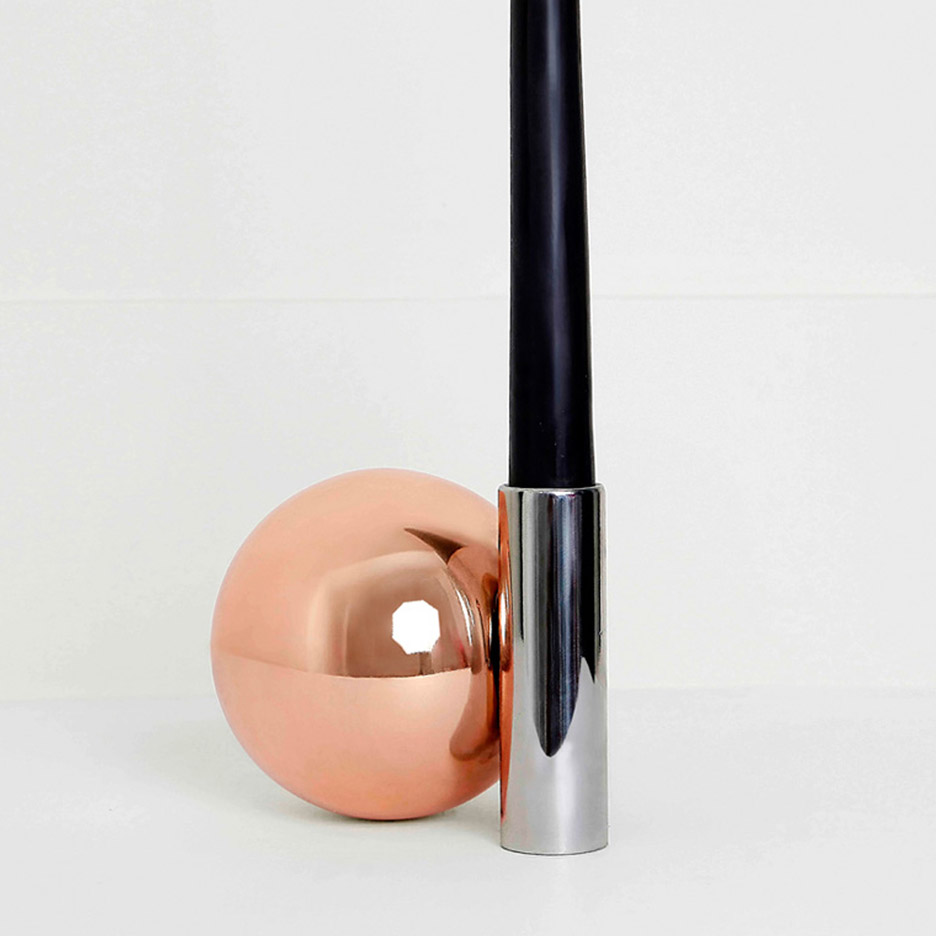
Brass also featured in MEJD Studio's Loading Collection that includes table lamps made from metallic spheres sliced in half, and a Michael Anasstasiades' One Well-Known Sequence lighting supported by brass rods.
Photography is by Neben Ningthoujam.